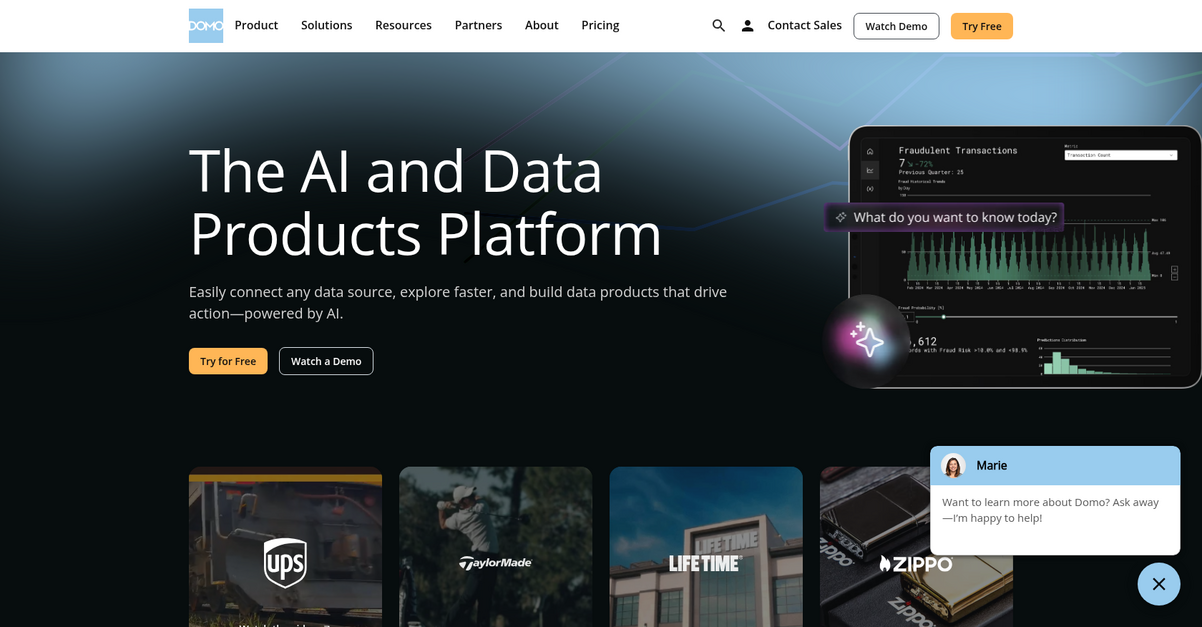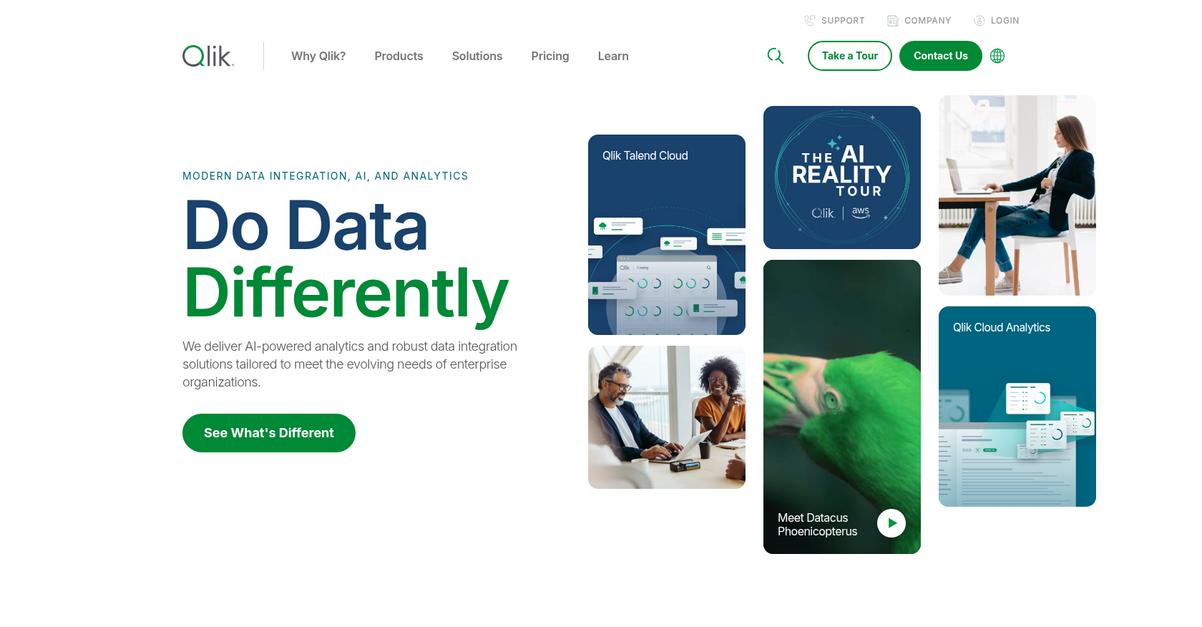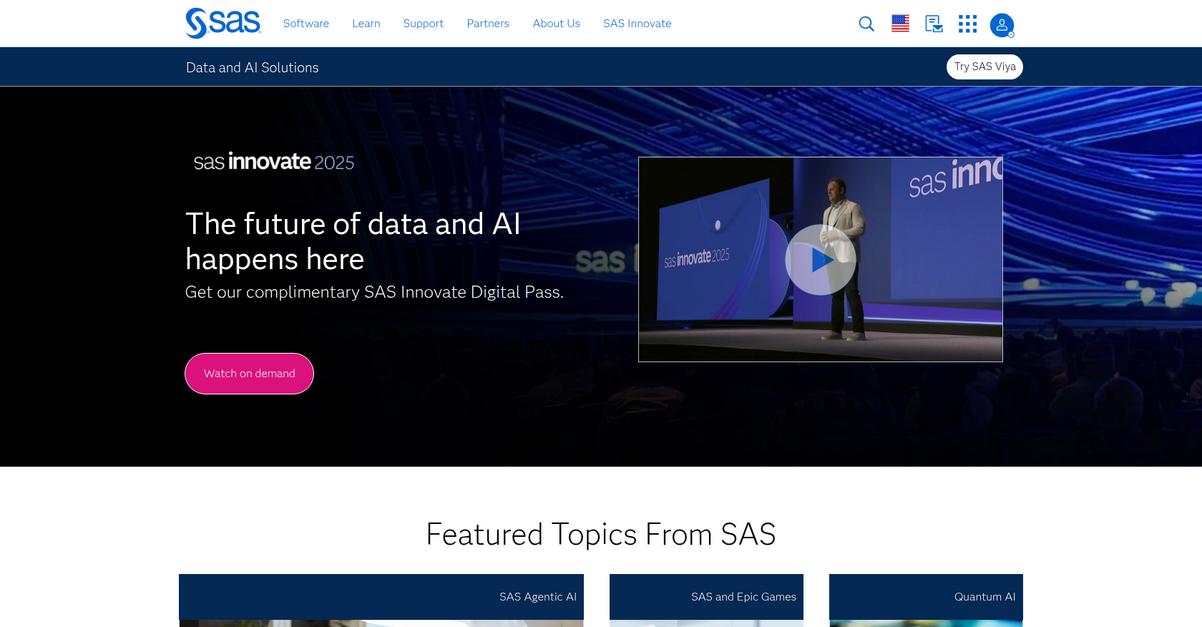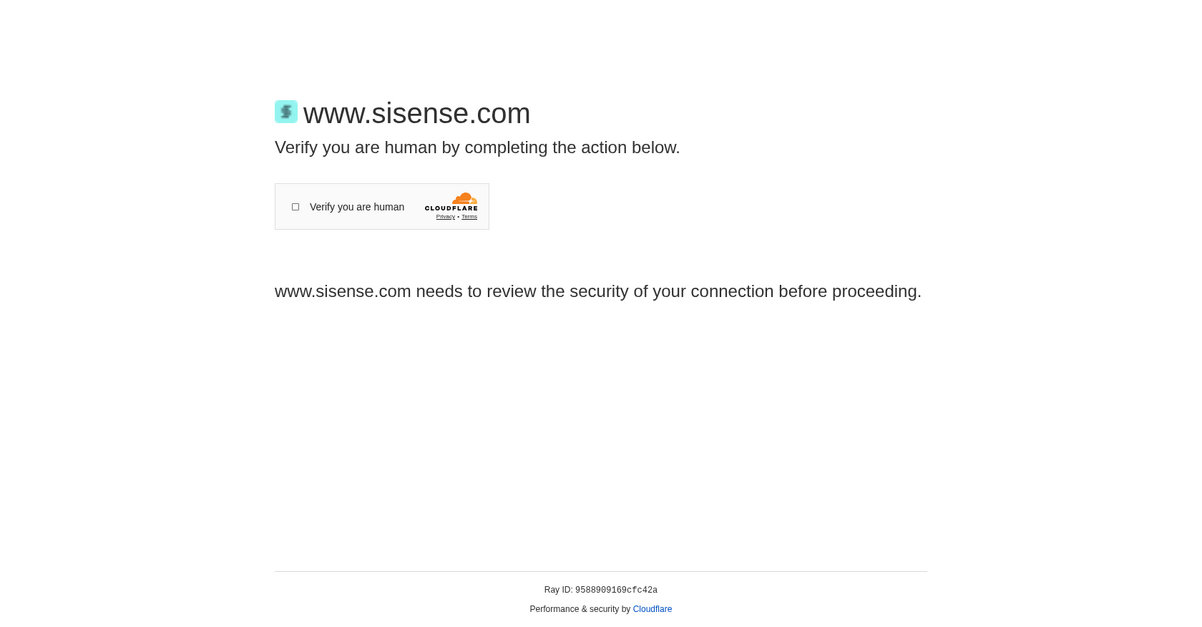Tired of slow, gut-feel decisions?
You have tons of data scattered across departments, but getting a single, clear, actionable insight feels like an uphill battle.
The real problem is that you miss opportunities while manually piecing together reports. By the time you’re done, the moment has passed.
This struggle is common. A BARC report found 41% of organizations cite data quality as a major adoption barrier. These challenges prevent teams from getting clear answers.
The right BI tool fixes this by helping you unify all your data sources and get the insights you need in real-time.
In this guide, I’m going to walk you through the very best business intelligence tools. I’ll show you how they transform raw data into clear, interactive dashboards.
You’ll discover how to empower your entire team to make smarter, faster decisions, without anyone needing to be a data scientist.
Let’s get started.
Quick Summary:
| # | Software | Rating | Best For |
|---|---|---|---|
| 1 | Tableau → | Enterprises & diverse roles | |
| 2 | Domo → | Leaders & data analysts | |
| 3 | Qlik → | Data-driven organizations | |
| 4 | SAS → | Leaders & IT managers | |
| 5 | Looker → | Data-governed enterprises |
1. Tableau

Struggling with unclear performance metrics and delayed analysis?
Tableau Next accelerates data, insights, and action, making your decisions faster. This means you can turn trusted insights into autonomous action, anytime.
You’ll discover how to empower everyone to act on data, no matter who they are. This transforms how your organization uses data to solve problems.
Here’s how to unlock your data’s full potential.
Tableau helps you see, understand, and act on data through its visual analytics platform. It’s built for limitless data exploration without interrupting your analysis flow.
You can connect to all your data with fully integrated AI/ML capabilities, governance, and data management. Tableau delivers trusted insights for everyone, enriching agents with conversational AI. This enables business leaders, analysts, and IT managers to increase efficiency and deliver trusted data with governance.
Additionally, Tableau Next is built on Salesforce and integrated with Agentforce, offering a new bundle with premium AI and enterprise capabilities. KeyBank empowered 10,000 employees with actionable insights using Tableau, and JLR delivered £250 million in business value.
Make data-driven decisions across your organization.
Key features:
- Intuitive Visual Analytics Platform: Empowers you to ask questions and explore data without learning complex software, ensuring limitless data exploration.
- Integrated AI/ML Capabilities: Accelerates data-driven decisions with a trusted AI assistant, including conversational AI for faster data preparation and visualization.
- Broad Connectivity and Deployment: Connects to all your data sources and can be deployed in the cloud, on-premises, or integrated natively with Salesforce CRM.
Learn more about Tableau features, pricing, & alternatives →
Verdict: Tableau is an excellent choice among the best business intelligence tools for organizations seeking to streamline data integration and empower diverse roles. Its visual analytics, AI-powered insights, and broad deployment options make it a trusted partner for building a data-driven culture, as seen in JLR delivering £250 million in business value.
2. Domo

Are fragmented data sources hindering your business decisions?
Domo connects and prepares data from any source, simplifying access and transforming data for you.
This means you can centralize and simplify data access with powerful ETL capabilities, transforming data easily.
Here’s how you can command your data.
Domo integrates your data, enabling instant insight discovery and sharing. You can build powerful data products and impactful visualizations.
Plus, you can utilize secure and private AI with Domo, embedding AI Chat into your content to deliver natural conversations and personalized insights. Additionally, AI-assisted workflows help overcome technical barriers. This saves time and maintains focus.
The platform includes AI agents that are your tireless teammates, automating tasks and adapting dynamically, tailored to your specific needs. These AI services streamline operations and reduce costly errors, empowering your organization to work smarter and focus on high-impact priorities.
The result: drive innovation and impact with your data.
Key features:
- Comprehensive Data Integration: Connect, centralize, and prepare data from any source using powerful ETL capabilities and a wide range of connectors, ensuring data readiness for analysis.
- AI-Enhanced Business Intelligence: Discover and share insights instantly with AI assistance, including AI Chat for natural conversations and AI-assisted workflows to accelerate decisions and results.
- Automated Workflows & AI Agents: Automate tasks, streamline operations, and reduce errors with no-code workflows and customizable AI agents, enabling smarter decision-making and increased productivity.
Learn more about Domo features, pricing, & alternatives →
Verdict: Domo stands out as one of the best business intelligence tools for leaders and analysts due to its robust data integration, AI-assisted insights, and automation capabilities. You can effectively streamline data processing, get real-time analytics, and align your teams with powerful visualizations and dashboards.
3. Qlik

Are your decisions truly backed by reliable data?
You might struggle with fragmented data and slow insights. Qlik gives you a complete view of your business. This means you get a single source of truth for all your critical information.
This ensures your team can easily uncover hidden insights, aligning everyone on clear performance metrics.
Here’s how Qlik helps.
It empowers everyone in your organization, from executives to staff. Qlik brings all your data together from various sources. This enables real-time analytics and visually intuitive dashboards that streamline your processes.
Additionally, Qlik provides a comprehensive set of features designed to help you analyze everything. You can explore complex relationships within your data, understand how different elements connect, and identify trends that drive smarter, faster decisions for your business.
Make informed, data-driven decisions efficiently.
Key features:
- Unified Data View: Connects fragmented data sources to provide a single, comprehensive view, eliminating manual processing and ensuring everyone works from the same accurate information.
- Actionable Insights: Transforms raw data into intuitive dashboards and real-time analytics, empowering all users to easily identify trends and make quicker, smarter decisions.
- Collaborative Decision-Making: Fosters alignment across departments by providing shared access to critical data and insights, ensuring your entire organization is on the same page.
Learn more about Qlik features, pricing, & alternatives →
Verdict: Qlik is excellent for organizations aiming to overcome data fragmentation and slow insights. It provides a unified data view and real-time analytics, empowering your team to make faster, smarter, data-driven decisions. This makes it one of the best business intelligence tools for driving efficiency and clarity.
4. SAS

Struggling to make sense of your business data?
SAS provides powerful analytics to transform your raw data into clear, actionable insights. This means you can finally unify disparate data sources for a single, reliable view.
I find that dealing with scattered information makes it impossible to react quickly, but SAS helps you discover patterns and trends you might otherwise miss.
Here’s how you get answers.
SAS solutions integrate all your data, from customer interactions to operational metrics. You get immediate access to real-time analytics and predictive capabilities.
This helps you automate reporting and build interactive dashboards, ensuring everyone can easily understand complex information. Additionally, SAS helps you predict future outcomes and identify new opportunities before they arise.
The result is smarter, faster business decisions.
Key features:
- Data Integration: Unify fragmented data from various sources into a single, comprehensive view for consistent analysis.
- Predictive Analytics: Utilize advanced models to forecast future trends and identify emerging opportunities or potential risks.
- Automated Reporting: Generate clear, interactive reports and dashboards, empowering all users to access and interpret insights efficiently.
Learn more about SAS features, pricing, & alternatives →
Verdict: SAS is one of the best business intelligence tools for leaders, analysts, and IT managers seeking to overcome fragmented data and slow insights. Its capabilities in data integration, predictive analytics, and automated reporting empower your team to make faster, smarter decisions and align around a unified source of truth.
5. Looker

Are your business decisions lagging due to fragmented data?
Looker builds the foundation for responsible data insights, leveraging Google’s AI-led innovation to provide an intelligent BI solution. This means you can finally connect those disparate data sources.
With Looker’s universal semantic modeling layer, you get a single, trusted source for all your metrics, ensuring consistent results across your entire organization.
Here’s how you can make smarter decisions, faster.
Looker solves your problem by transforming your data into a unified, trusted source for both AI and human analysis, improving access to actionable insights.
It features Google-easy dashboarding, allowing users to interact with data in new ways through an intuitive, drag-and-drop canvas. You’ll find visually stunning dashboarding capabilities that make crafting compelling data stories simple. Plus, Looker ensures that expanded freedoms don’t compromise data integrity with its unified user management and governance features.
Additionally, Gemini in Looker offers AI-powered analytics to accelerate your analytical workflows, assisting with visualization creation, formula building, and report generation. This is underpinned by robust semantic and Gemini foundational models, fostering a collaborative and conversational user experience for mass appeal and empowering self-service BI.
This puts inspiration and opportunity directly into your hands.
If you’re also looking into integrating analytics directly into your products, my article on best embedded analytics software covers how to simplify product data.
Key features:
- Universal Semantic Modeling Layer: Centralizes data curation and governance, providing consistent, trustworthy metrics regardless of where they are consumed.
- AI-Powered Analytics with Gemini: Accelerates analytical workflows, including creating visualizations, formulas, and reports, driven by advanced AI models.
- Google-Easy Dashboarding & Reporting: Offers intuitive drag-and-drop canvas for visually stunning dashboards, enabling self-service analysis and robust governance.
Learn more about Looker features, pricing, & alternatives →
Verdict: Looker stands out as one of the best business intelligence tools by unifying fragmented data through its semantic layer and AI-powered analytics. It provides easy-to-use, governed dashboards, empowering everyone in your organization to make informed, data-driven decisions efficiently and reliably.
6. Zoho Analytics

Struggling with scattered data and slow insights?
Zoho Analytics delivers an AI-powered, self-service BI platform that transforms raw data into actionable insights, helping you visualize data and collaborate effectively.
This means you can go from data to insights in minutes, streamlining your workflow and enhancing productivity across your team.
Empower every decision with clarity.
Zoho Analytics addresses these pain points by allowing you to connect and blend data from 500+ sources, including databases, business apps, and data warehouses, centralizing your information.
You can then prepare data using their visual builder and AI engine, which improves data quality with over 250 transforms, ensuring your insights are reliable. The platform leverages augmented analytics with AI, allowing you to ask Zia, your conversational AI assistant, questions in natural language and get answers as reports or widgets, or receive automated AI-generated narratives for key trends. This intuitive approach helps your team build insightful, interactive reports and dashboards with 50+ visualizations using a simple drag-and-drop interface, making complex data accessible to everyone.
The result is a unified view of your business, enabling smarter, faster decisions.
Key features:
- Connect and blend data from 500+ sources including business apps, databases, and data warehouses, providing a holistic view of your business information.
- AI-powered self-service analytics with Zia, a conversational AI assistant, and automated insights that transform complex data into easily understandable narratives and reports.
- Visually analyze data with 50+ visualizations and a drag-and-drop interface, allowing you to quickly create insightful and interactive reports and dashboards.
Learn more about Zoho Analytics features, pricing, & alternatives →
Verdict: Zoho Analytics stands out as one of the best business intelligence tools by simplifying complex data into actionable insights for business users, analysts, and IT managers. Its robust data integration, AI-driven analytics, and intuitive visualization tools empower your team to make informed, data-driven decisions, with customers like Versa Creative saving 5000 man-hours annually.
7. Sisense

Struggling with fragmented data and slow insights?
Sisense delivers an AI-powered analytics platform that makes modeling, visualizing, and integrating data effortless. This means you can finally make sense of your disparate data sources.
You can effortlessly build smarter, intuitive analytics directly into your products or workflows. This empowers your users to make faster, better decisions.
Here’s how to simplify every step.
Sisense Intelligence helps app creators and developers deliver smarter, embedded analytics with AI-driven features. It guides users to better, faster decisions right where they work.
You can create intelligent data experiences that are accessible to everyone, whether they’re technical or not. Features like assistant and narrative enable natural-language exploration and auto-generated summaries, so insights come faster and more often.
Additionally, with Compose SDK and embeddable components, I can tell you that Sisense simplifies the integration of AI-powered analytics into any app. This means you can deliver a seamless experience for your users without needing data science expertise or clunky workarounds, ultimately accelerating innovation with predictive analytics.
The result: move beyond traditional BI.
Key features:
- AI-powered analytics platform delivers effortless modeling, visualizing, customizing, and integrating analytics, helping you bridge the gap between insights and action by simplifying complex data.
- Embedded analytics capabilities allow developers to integrate AI-powered insights directly into your existing applications, ensuring a seamless user experience without requiring extensive data science expertise.
- Predictive analytics with real-time insights moves you beyond traditional BI by uncovering patterns, surfacing anomalies, and anticipating future trends, helping your users stay ahead of the curve.
Learn more about Sisense features, pricing, & alternatives →
Verdict: Sisense provides a robust AI-powered platform for business intelligence, excelling in embedded analytics and predictive capabilities. Its intuitive tools and natural-language features make it suitable for various users, ensuring quick access to actionable insights. It’s definitely one of the best business intelligence tools for streamlining your decision-making.
8. TIBCO

Struggling with fragmented data and slow insights?
TIBCO’s platform helps you tap into “the power of now” by fueling your enterprise with real-time data.
This means you can streamline operations and accelerate development by bringing all your TIBCO technologies together for reimagined experiences.
Unlock your potential.
Here’s how TIBCO helps you make faster, smarter decisions by capitalizing on data in real time wherever it’s created. This ensures your business applications and analytics suites always have the most current information.
You can build and deploy enterprise solutions using robust capabilities like integration, messaging, event processing, process management, and data grid. This gives you industrial strength for high performance and reliability. Additionally, you can flexibly deploy solutions to public cloud, private cloud, on-premises, edge, or any combination, ensuring it fits your complex architecture and stringent business regulations. The result is simplified API management and enhanced business agility.
This means your organization can improve operational efficiency and agility by streamlining business processes, reducing costs, and improving the overall quality of services.
Key features:
- Real-time Data Capitalization: Enables your business to utilize data as it’s created, making it readily available for immediate use in business applications and analytics.
- Unified Platform for Operations: Streamlines operations by bringing together various TIBCO technologies into a single offering with reimagined experiences for operators, architects, and developers.
- Flexible Deployment Options: Offers a wide range of technology and deployment choices, including public, private, on-premises, or edge clouds, to meet diverse architectural and regulatory needs.
Learn more about TIBCO features, pricing, & alternatives →
Verdict: TIBCO stands out as one of the best business intelligence tools for organizations seeking real-time data insights, flexible deployment, and unified operations. Its ability to simplify API management and offer capabilities like integration and event processing, as seen in the 83% reduction in time spent per project for NASA, directly addresses core pain points for business leaders and data analysts.
Conclusion
Making decisions with incomplete data?
I know the struggle. Your data is everywhere, and getting a clear, actionable insight feels like an impossible task for your entire organization.
A BARC report shows 50% of data leaders observe a massive jump in BI usage when they implement self-service tools. This proves that creating a more accessible data culture is absolutely essential for growth.
So what’s the right move?
From my experience, Tableau is the best choice. It excels at turning scattered information into clear, actionable insights for your team to use.
Its visual analytics platform empowers everyone to make smarter decisions, like how JLR delivered £250 million in value. The best business intelligence tools should deliver that impact.
I recommend you Start a free trial of Tableau and see how it transforms your workflow and decision-making process firsthand.
Unlock your data’s full potential.






